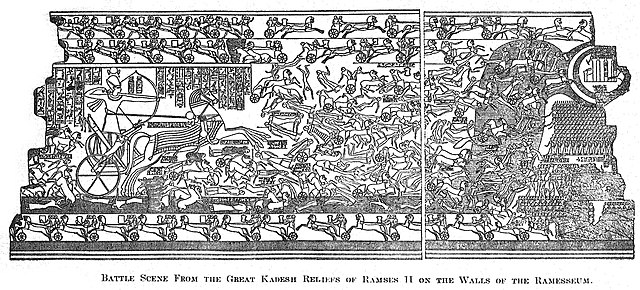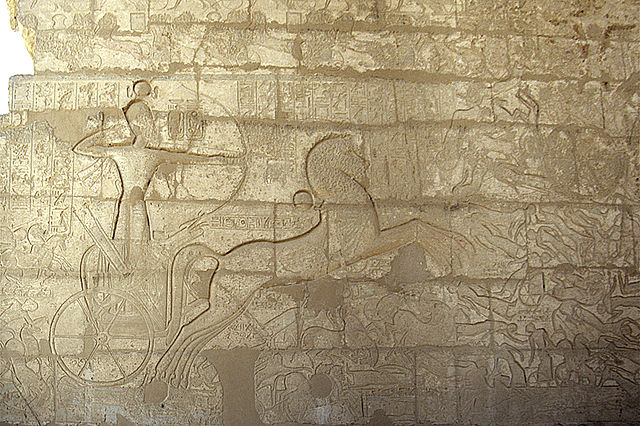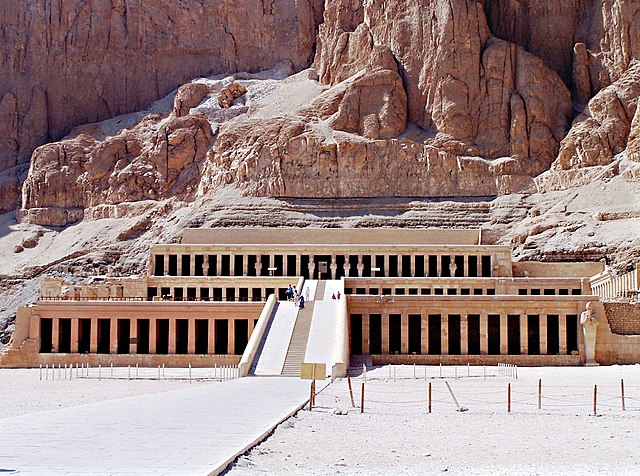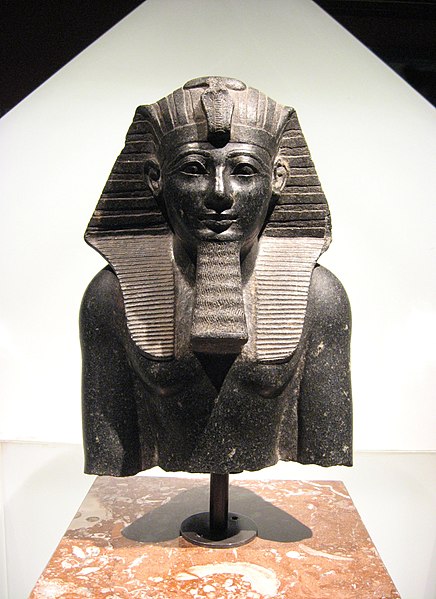The Battle of Kadesh took place in the 13th century BC between the Egyptian Empire led by pharaoh Ramesses II and the Hittite Empire led by king Muwatalli II. Their armies engaged each other at the Orontes River, just upstream of Lake Homs and near the archaeological site of Kadesh, along what is today the Lebanon–Syria border.
Depiction of Ramesses II slaying one enemy while trampling another, from a rock-cut relief at Abu Simbel
Rameses II in the Battle of Khadesh.
Battle scene from the Great Kadesh reliefs of Ramses II on the walls of the Ramesseum
The original relief from the Ramesseum
The New Kingdom, also referred to as the Egyptian Empire, was the ancient Egyptian nation between the 16th century BC and the 11th century BC. This period of ancient Egyptian history covers the Eighteenth, Nineteenth, and Twentieth Dynasties. Through radiocarbon dating, the establishment of the New Kingdom has been placed between 1570 BC and 1544 BC. The New Kingdom followed the Second Intermediate Period and was succeeded by the Third Intermediate Period. It was the most prosperous time for the Egyptian people and marked the peak of Egypt's power.
Queen Hatshepsut's Temple at Deir el-Bahari, was called Djeser-Djeseru, meaning the Holy of Holies
Thutmosis III, a military man and member of the Thutmosid royal line is commonly called the Napoleon of Egypt because his conquests of the Levant brought Egypt's territories and influence to its greatest extent
Akhenaten, born Amenhotep IV, was the son of Queen Tiye and he turned away from the dominant cult of Amun, relocated the capitol, and promoted that of the Aten as a supreme deity
Nefertiti - the wife of Akhenaten, she held position as co-regent with Akhenaten and may have ruled later as pharaoh in her own right (as she is one of few candidates for the identity of Pharaoh Neferneferuaten)








